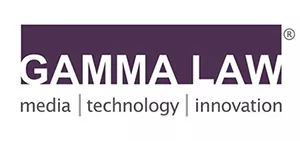- with readers working within the Advertising & Public Relations and Banking & Credit industries
- within Corporate/Commercial Law, Privacy and Technology topic(s)
- in United Kingdom
Legal issues arising from intellectual property-related concerns have received wide coverage in recent months and, in some cases, have derailed popular NFT projects. It's no exaggeration to say that the success of an NFT project may hinge on how well the NFT artist agreement is drafted and how well it defines the terms under which an NFT minter can use any underlying art. This article covers the main ingredients in a strong NFT artist agreement and some important points that NFT minters and artists must know to protect their rights.
Meaning and Importance of an NFT Artist Agreement
An NFT artist agreement is a legal document that outlines the terms and conditions under which the creator of an original work-a piece of art, music, consumer good, or another type of intellectual property-grants certain rights to the minter of an NFT based on that work in exchange for compensation. Artists very reasonably seek to protect their work (irrespective of the medium) from unauthorized reproduction and sale and to participate in their commercialization. An NFT artist agreement is the equivalent of a license agreement used in traditional or digital media to say, produce and sell T-shirts emblazoned with a sports team logo or a cartoon mouse. It defines the scope of the grant of license in advance, reducing the likelihood of conflict or disputes between the NFT minter and the artist. The agreement may be called a non-fungible token digital art commission contract, commission agreement for NFT artwork, NFT digital artist commission agreement, digital art agreement, artist commission agreement, licensing agreement, or another similar term.
If NFT minters or developers fail to obtain a signed NFT artist agreement before creating an NFT based on artwork they do not own, they may be inviting conflicts down the road pertaining to the underlying asset's copyright, trademark, or other intellectual property rights. For example, recently, an art collector has filed a lawsuit before a New York federal court to clarify rights over celebrated Indian artist M.F. Husain's painting, Lightning or The Guernica of India. The art collector purchased the 60-foot mural and plans to sell NFTs based on it. The artist's estate objected, claiming that buying the painting does not convey the rights necessary to carry out the plan. Because the purchase agreement makes no mention of NFT rights, there is no clear way to assess each party's position on what actually changed hands when the collector bought the piece.
Key Provisions in NFT Artist Agreements
A strong, comprehensive NFT artist agreement will delineate the arrangement's scope, each party's rights and obligations, the working relationship between parties, timelines and deadlines, copyright ownership, and more:
- Scope of the Agreement
At a minimum, the NFT artist agreement should clearly describe the artwork being licensed or purchased, the duration of the license, what fee, royalties, or other consideration the artist will receive in exchange for signing the contract, and what the licensor is allowed to do with the NFTs he or she creates. - Relationship Between Parties
In many cases, an NFT minter will simply commission artwork from artists on a work-for-hire basis. In this scenario, the minter would be considered a commissioning agent or commissioning party while the artist serves as a contractor who produces a product that will be owned by the minter. In other situations, a company might use in-house illustrators or graphic artists who produce works to be minted into NFTs. In this situation, the employer-employee relationship takes precedence. The worker would have no more right to the NFT than an assembly line worker to a car she helps build. Other cases are not so cut and dry. IP owners and artists may engage a third party to produce NFTs based on their owned works and display, market, sell, or otherwise leverage them in various partnership arrangements. These may include advance payments, royalty splits, profit sharing, options, and other sophisticated deals best drawn up by an experienced NFT attorney. - Rights and Obligations
The license should explain any obligations the artist, the NFT minter, and any future purchaser of the NFTs created must perform and the compensation they will receive. Agreements commonly spell out whether the artist is allowed to make physical or digital copies of the artwork, license the artwork to other parties, and receive royalties for the original and/or subsequent sales of NFTs based on the artwork. Similarly, the agreement should stipulate whether the minter can retain exclusive rights to the NFT for a certain period of time, determine its sale price, or sub-license the rights granted. The artist's obligations may include the duty to produce high-quality artwork, deliver it in a timely manner, and ensure that the rights of any third party are not infringed in its production. The contract should lay out how and when the NFT minter will pay the artist and may require attribution of the work to the artist or author at all times and maintain the spirit of the art and reputation of the artist in any derivative works. - Copyright
Copyright ownership can cause significant issues when not sufficiently defined in an NFT artist agreement. The courts have decided that copyright to underlying assets does not automatically transfer to NFT minters, purchasers, and licensees. The artist retains the right to transfer the copyright, grant a license for specific purposes, or limit the use of NFTs. If the intent of the minter is for the artist to convey any of these rights, it must be expressly stated in the NFT artist agreement. If not, the artist who created the original artwork retains the copyright. - Jurisdiction
With NFT legislation still in its infancy and each state and country creating regulations and setting precedents within their borders, it is recommended that the NFT artist agreement specify which jurisdiction will rule should any disagreement arise. Some jurisdictions are proving to be sympathetic to NFT minters, while others tend to side with artists. The country in which the artist lives or the licensing company is incorporated may play a role, giving one side a "home field advantage." - Liability
Since the rules surrounding NFTs are still evolving, it is important for the NFT artist agreement to include a clause laying out the consequences each party will face should they fail to deliver on their obligations. These consequences should take into account that the failure may be the result of forces beyond their control. For example, a jurisdiction may pass new regulatory controls that make minting NFTs more difficult or even illegal; natural disasters may destroy the means for creating the artwork or minting the NFT.
Any business or individual intending to create, sell, mint, or develop NFTs should always protect their rights and clarify their responsibilities by creating and entering into an NFT artist agreement with their artist partners. It is best to hire an attorney experienced in NFTs and contract law to draft the NFT artist agreement as they can be complex documents. It is important to note that many NFT artist agreements fail to adequately safeguard the interests of both parties, as they are drafted either by artist advocacy groups or NFT minter proponents.
The content of this article is intended to provide a general guide to the subject matter. Specialist advice should be sought about your specific circumstances.


